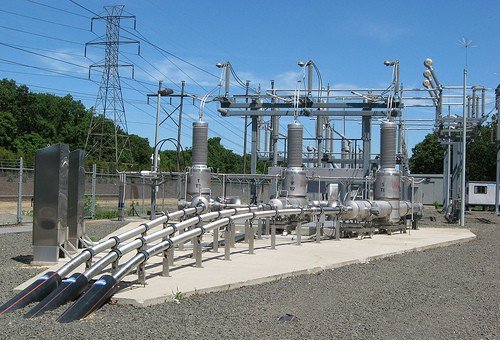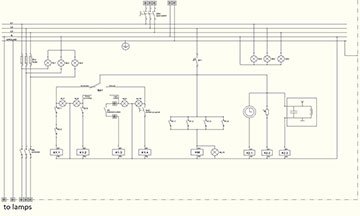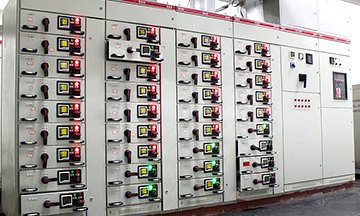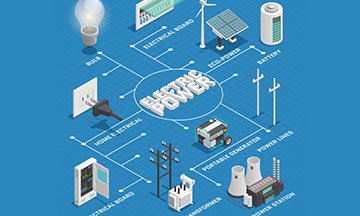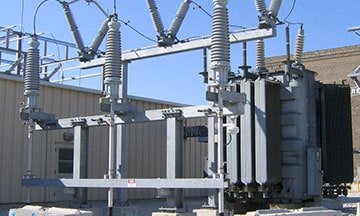Electrical Power System Engineering: Design, Analysis, Fault Limiting, PFC, Harmonic Controls & Protection
| Date | Venue | Duration | Fees | |
|---|---|---|---|---|
| 29 Apr - 03 May, 2024 | Dubai | 5 Days | $4750 | Register |
| 03 Jun - 07 Jun, 2024 | Dubai | 5 Days | $4750 | Register |
| 07 Jul - 18 Jul, 2024 | Doha | 10 Days | $9150 | Register |
| 15 Jul - 19 Jul, 2024 | Dubai | 5 Days | $4750 | Register |
| 12 Aug - 16 Aug, 2024 | Abu Dhabi | 5 Days | $4950 | Register |
| 19 Aug - 23 Aug, 2024 | Dubai | 5 Days | $4750 | Register |
| 30 Sep - 04 Oct, 2024 | London | 5 Days | $5695 | Register |
| 30 Sep - 04 Oct, 2024 | Dubai | 5 Days | $4750 | Register |
| 07 Oct - 11 Oct, 2024 | Dubai | 5 Days | $4750 | Register |
| 06 Nov - 08 Nov, 2024 | Houston | 3 Days | $4475 | Register |
| 11 Nov - 15 Nov, 2024 | Dubai | 5 Days | $4750 | Register |
| 16 Dec - 20 Dec, 2024 | Dubai | 5 Days | $4750 | Register |
Course Overview
This Electrical Power System Engineering course includes content that covers Power System Design, Short Circuit Analysis, Coordination Studies, and Power Factor and Power System Harmonic Analysis. It is designed to address all facets of industrial power generation and distribution systems, including system planning, equipment selection, specification and application, system grounding, harmonic control, and protection and conformity with electrical code requirements. This program will also cover many in-class examples and problems for a hands-on learning experience.
Why is it important to study ‘Electrical Power System Engineering: Design, Analysis, Fault Limiting, PFC, Harmonic Controls & Protection’? A correctly functioning electric power distribution system is imperative for the maintenance, troubleshooting and competent operation of any power plant.
The power distribution system contains high voltage utility circuit breakers, distribution transformers, main transformers, motor control centres, voltage switchgear, motors, and variable speed drives. Therefore, all individuals who are involved in working with such critical equipment must be aware of its uses and implications in their work environments.
This Zoe training course will empower you with the consciousness of knowing the importance of maintenance procedures for Electrical Power System Engineering: Design, Analysis, Fault Limiting, PFC, Harmonic Controls & Protection, as well as how to go about planning and carrying out the maintenance activities efficiently.
Course Objectives
Upon completing this Electrical Power System Engineering: Design, Analysis, Fault Limiting, PFC, Harmonic Controls & Protection course successfully, participants will be able to:
- Understand power system design and analysis
- Evaluate harmonics and design harmonic filters
- Implement coordination lessons and curves
- Select and size power system components
- Conduct short circuit studies
- Design electrical power systems more efficiently
- Calculate overcurrent device settings
Training Methodology
This is an interactive Electrical Power System Engineering training program and will consist of the following training approaches:
- Lectures
- Worksheets
- Technical Articles
- Seminars & Presentations
- Group Discussions
- Assignments
- Case Studies
- Functional Exercises
Just like all our courses, this program also follows the ‘Do-Review-Learn-Apply’ model.
Organisational Benefits
Companies who send in their employees to participate in this Electrical Power System Engineering course can benefit in the following ways:
- Obtain experienced and skilled professionals to effectively manage electrical power systems
- Keep your company one step ahead with this all-inclusive design overview of electrical power systems
- Gain a competitive advantage in the industry with more efficient system designs
- Increase employee satisfaction with the provision for professional development
- Trained employees will be better equipped to prevent issues related to electrical power systems
- We can consider tailoring our content to your organisation’s needs
Personal Benefits
Professionals who participate in this Electrical Power System Engineering course can benefit in the following ways:
- Understand the appreciation of related engineering disciplines such as civil, structural and data communications
- Increase your exposure to the design of electrical power systems
- Gain in-depth knowledge of electrical transmission and distribution equipment
- Learn the theoretical background of electrical engineering, increase your willingness to use and upgrade your numerical and computer skills
- Gather experience in operating, maintaining and troubleshooting of substation equipment
Who Should Attend?
This Electrical Power System Engineering course is ideal for electrical engineers, power system engineers, design engineers, technicians, planners, consultants, managers, system operators and all those who want to learn about power system engineering.
All individuals are concerned with the design of substations, contractors executing projects involving electrical HV substations, electrical commissioning engineers, engineers who are associated with power distribution or involved in power generating plants with utility-scale generators, and utility engineers dealing with power transmission and distribution systems will all benefit from this program.
Course Outline
MODULE 1 – POWER SYSTEM DESIGN
- Introduction to Electrical Power System Design
- Primary Selective Systems
- Electrical Safety Considerations
- Economic Considerations of Design
- Delta vs. Wye Configurations
- Radial Distribution Systems
- Networks
- Electrical Codes and Standards
- Double Ended Substation
- Loop System
- Selecting the Appropriate Voltage
- Voltage Drop Calculations
MODULE 2 – CALCULATIONS
- Appliance Loads
- General Lighting Load Calculations
- Receptacles Load Calculations
- National Electrical Code Article 220 Requirements
- Demand Factors
- Continuous vs. Non-Continuous
- Panel Schedules
MODULE 3 – CONDUCTORS, PANELBOARDS & SWITCHBOARDS
- Conductor Selection
- Conduit Sizing
- Insulation Type
- Bus Bracing
- Series Ratings
- Correction Factors
- Series Rated vs. Fully Rated Panels
- Switchboard Bus Ratings
- Breaker and Fuse Selection
- Temperature Considerations
- Neutral and Ground Conductors
MODULE 4 – DESIGN & CASE STUDIES
- Small Industrial Switchboard Circuit Design
- Lighting Design
- Lighting Layout
- Zonal Cavity Lighting Calculations
- Case Studies
MODULE 5 – TRANSFORMERS
- Types of Transformers
- Cast Coil Designs
- Sizing and Protecting Transformers
- Insulation Characteristics
- Transformer Protection
MODULE 6 – MOTOR CIRCUITS, LOCATIONS, SWITCHES & POWER SUPPLIES
- Locked Rotor and Overload Protection
- Insulation Class / Service Factor
- Motor Tables
- Grounding Electrode System Requirements
- Equipment Grounding Conductor Selection,
- Power Quality Issues
- Sizing of Feeders
- Motor Short Circuit Protection
- Designing Motor Circuits
- Hazardous/Classified Locations
- Explosion Proof Equipment
- Intrinsically Safe Circuits
- Size and Ratings of Transfer Switches
- Heat Loss
- Compatibility with Generators
- Designing a Transformer Circuit
- Uninterruptible Power Supplies
- UPS Types and Operation
MODULE 7 – SHORT CIRCUIT ANALYSIS
- Short Circuit Analysis – Introduction
- Interrupting and Withstand Ratings
- Data Requirements
- Available Utility Short Circuit Current
- Short Circuit Study
- Conductor Impedance
MODULE 8 – CONDUCTOR IMPEDANCE AND SHORT CIRCUIT CALCULATIONS
- Determining the Source Impedance
- Conductor Calculation Worksheets
- Calculating the Conductor Impedance
- Conductor Impedance Tables
- Short Circuit Calculations with Conductor Impedance
MODULE 9 – TRANSFORMER IMPEDANCE AND SHORT CIRCUIT CALCULATIONS
- Transformer Testing and Percent Impedance
- X/R Ratio
- Using Percent Impedance for Short Circuit Calculations
- Transformer Calculation Worksheets
- Short Circuit Calculations with Transformer Impedance
- Determining the Source Impedance in Percent
- Infinite Bus Calculations
MODULE 10 – MOTOR CONTRIBUTION
- Impact of Motor Contribution on Short Circuit Current
- Multipliers for Motor Contribution.
- Theory of Motor Short Circuit Contribution
- Sub-Transient Reactance
- Consideration of Motor Contribution – Case Study
MODULE 11 – DEVICE INTERRUPTING & SERIES RATINGS
- Circuit Breaker and Fuse Interrupting Ratings
- Development of Series Ratings
- Proper Application of Series Ratings
- Symmetrical and Asymmetrical Short Circuit Current
- Dynamic Impedance
- Fully Rated vs. Series Rated
- UL and ANSI Testing Methods
- Current Limitation
- Short Circuit Study of Small Industrial System
MODULE 12 – COORDINATION STUDIES
- Setting Ground Fault Devices
- Protective Relay Operation
- Amp Tap Setting
- Time Dial Operation and Setting
- Instantaneous Function
- Selective Coordination Basics
- Understanding Time Current Curves (TCC)
- Overload Region of TCC
- Minimum Melting and Total Clearing Curves
- Coordination of Electronic Trip Circuit Breakers
- Residually Connected Ground Fault Schemes
- Instantaneous Region
- Fixed vs. Adjustable Instantaneous
- Determining the Setting of the Instantaneous
- Time Current Curves of Fuses
- Zero Sequence Ground Fault Relaying
- Feeders and Equipment
- Nuisance Tripping
- Current Transformers
- Study of Small Industrial Plant
MODULE 13 – POWER FACTOR AND HARMONIC ANALYSIS
- Power Factor Correction
- Power Factor Calculations
- Third Harmonics
- Utility Rate Structure
- Harmonics
- Harmonic Related Problems
- Resonance
- Evaluating Harmonics
- Correction of Harmonic Problems
- Design of a 5th Harmonic Filter for an Industrial Plant
